The Influence of Deep Cryogenic Treatment (DCT) on the Microstructure Evolution and Mechanical Properties of TC4 Titanium Alloy
Abstract
1. Introduction
2. Experimental Procedures
2.1. Testing Materials
2.2. Testing Equipment
3. Results and Discussion
3.1. Microstructure Evolution Analysis
3.2. Phase Composition Analysis
3.2.1. XRD Analysis
3.2.2. SEM Analysis
3.2.3. EDS Analysis
3.2.4. EBSD Analysis
3.2.5. TEM Analysis
3.3. Comparative Analysis of Mechanical Properties
3.3.1. Comparison of Hardness
3.3.2. Comparison of Tensile Properties
3.3.3. Comparison of Impact Properties
4. Conclusions
- (1)
- DCT has a significant effect on the grain refinement of the TC4 titanium alloy. Obvious grain refinement behavior can be observed with 6 h of DCT, and the grain refinement inside the TC4 titanium alloy base material becomes more obvious with an increase in the DCT time. In addition, DCT promotes the transformation of the β phase into the α′ phase in the TC4 titanium alloy base material. Through SEM point scanning of the element V, it was found that the β phase inside the base material had transformed into the α′ phase.
- (2)
- The hardness of the TC4 titanium alloy base material was significantly improved with DCT. In particular, the hardness of the base material increased from 331.2 HV0.5 to 362.5 HV0.5 with 18 h of DCT, presenting a 9.5% improvement compared to the sample without DCT.
- (3)
- The sample subjected to 18 h of DCT experienced little effect on its tensile strength, but there were notable improvements in elongation (19.13%) and toughness (36.36 J/cm2), demonstrating increases of 27.53% and 8.09%, respectively, compared to the sample without DCT. Additionally, the tensile and impact fracture morphologies displayed characteristics consistent with ductile fracture.
Author Contributions
Funding
Institutional Review Board Statement
Informed Consent Statement
Data Availability Statement
Conflicts of Interest
References
- Zeng, L.; Bieler, T.R. Effects of Working, Heat Treatment, and Aging on Microstructural Evolution and Crystallographic Texture of α, α′, α″ and β Phases in Ti-6Al-4V Wire. Mater. Sci. Eng. A 2005, 392, 403–414. [Google Scholar] [CrossRef]
- Callegari, B.; Oliveira, J.P.; Aristizabal, K.; Coelho, R.S.; Brito, P.P.; Wu, L.; Schell, N.; Soldera, F.A.; Mücklich, F.; Pinto, H.C. In-situ Synchrotron Radiation Study of the Aging Response of Ti-6Al-4V Alloy with Different Starting Microstructures. Mater. Charact. 2020, 165, 110400. [Google Scholar] [CrossRef]
- Venkatesh, B.D.; Chen, D.L.; Bhole, S.D. Effect of heat treatment on mechanical properties of Ti-6Al-4V ELI alloy. Mater. Sci. Eng. A 2009, 506, 117–124. [Google Scholar] [CrossRef]
- Lee, S.W.; Park, C.H.; Hong, J.K.; Yeom, J.-T. Effect of solution treatment and aging conditions on tensile properties of Ti-Al-Fe-Si alloy. Mater. Sci. Eng. A 2017, 697, 158–166. [Google Scholar] [CrossRef]
- Xu, K.H.; Xue, Y.; Zhang, Z.M.; Wang, Q.; Yan, J.; Liu, H.; Zhang, J. The effect of heat treatment on α/β phases evolution of TC4 titanium alloy fabricated by spark plasma sintering. Procedia Manuf. 2020, 50, 713–718. [Google Scholar] [CrossRef]
- Yan, X.C.; Yin, S.; Chen, C.Y.; Huang, C.; Bolot, R.; Lupoi, R.; Kuang, M.; Ma, W.; Coddet, C.; Liao, H.; et al. Effect of heat treatment on the phase transformation and mechanical properties of Ti6Al4V fabricated by selective laser melting. J. Alloys Compd. 2018, 764, 1056–1071. [Google Scholar] [CrossRef]
- Saini, A.; Pabla, B.S.; Dhami, S.S. Improvement in performance of cryogenically treated tungsten carbide tools in face milling of Ti-6Al-4V alloy. Mater. Manuf. Process. 2020, 35, 598–607. [Google Scholar] [CrossRef]
- Huang, X.; Ding, S.; Yue, W. Cryogenic Treatment on Ti6Al4V Alloy Fabricated by Electron Beam Melting: Microstructure and Mechanical Properties. J. Mater. Res. Technol. 2022, 20, 3323–3332. [Google Scholar] [CrossRef]
- Zhou, J.Z.; Li, J.; Huang, S.; Sheng, J.; Meng, X.; Sun, Q.; Sun, Y.; Xu, G.; Sun, Y.; Li, H. Influence of Cryogenic Treatment Prior to Laser Peening on Mechanical Properties and Microstructural Characteristics of TC6 Titanium Alloy. Mater. Sci. Eng. A 2018, 718, 207–215. [Google Scholar] [CrossRef]
- Gu, K.X.; Wang, K.K.; Zheng, J.P.; Chen, L.-B. Electrochemical Behavior of Ti-6Al-4V Alloy in Hank’s Solution Subjected to Deep Cryogenic Treatment. Rare Met. 2018, 42, 2037–2046. [Google Scholar] [CrossRef]
- Gu, K.X.; Wang, J.J.; Zhou, Y. Effect of Cryogenic Treatment on Wear Resistance of Ti-6Al-4V Alloy for Biomedical Applications. J. Mech. Behav. Biomed. Mater. 2014, 30, 131139. [Google Scholar] [CrossRef]
- Singh, P.; Pungotra, H.; Kalsi, N.S. Optimization of Deep Cryogenic Treatment Conditions for the Wear Rate of UNS R56400 (Ti6Al4V) Medical Titanium Alloy using Taguchi’s Method. Mater. Technol. 2019, 34, 84–91. [Google Scholar] [CrossRef]
- Mónica, P.; Bravo, P.M.; Cárdenas, D. Deep cryogenic treatment of HPDC AZ91 magnesium alloys prior to aging and its influence on alloy microstructure and mechanical properties. J. Mater. Process. Technol. 2016, 239, 297–302. [Google Scholar] [CrossRef]
- Xu, Y.L.; Qian, P.; Qiao, Y.X.; Yin, W.; Jiang, Z.; Li, J. The Influence of Heat and Cryogenic Treatment on Microstructure Evolution and Mechanical Properties of Laser-Welded AZ31B. Materials 2023, 16, 4764. [Google Scholar] [CrossRef] [PubMed]
- Çakir, F.H.; Çelik, O.N. The Effects of Cryogenic Treatment on the Toughness and Tribological Behaviors of Eutectoid Steel. J. Mech. Sci. Technol. 2017, 31, 3233–3239. [Google Scholar] [CrossRef]
- Çakir, H.F.; Çelik, N.O. Influence of Cryogenic Treatment on Microstructure and Mechanical Properties of Ti6Al4V Alloy. J. Mate. Eng. Perform. 2020, 29, 6974–6984. [Google Scholar] [CrossRef]
- Li, G.R.; Qin, T.; Fei, A.G.; Wang, H.M.; Zhao, Y.T.; Chen, G.; Kai, X.Z. Performance and Microstructure of TC4 Titanium Alloy Subjected to Deep Cryogenic Treatment and Magnetic field. J. Alloys Compd. 2019, 802, 50–69. [Google Scholar] [CrossRef]
- Gu, K.X.; Wang, J.J.; Yuan, Z.; Zhang, H.; Li, Z.Q.; Zhao, B. Effect of Cryogenic Treatment on the Plastic Property of Ti-6Al-4V Titanium Alloy. AIP Conf. Proc. 2014, 1574, 42–47. [Google Scholar]
- Gu, K.X.; Li, Z.Q.; Wang, J.J.; Zhou, Y.; Zhang, H.; Zhao, B.; Ji, W. The Effect of Cryogenic Treatment on the Microstructure and Properties of Ti-6Al-4V Titanium Alloy. Mater. Sci. Forum 2013, 747–748, 899–903. [Google Scholar] [CrossRef]
- Gu, K.X.; Zhao, B.; Weng, Z.; Wang, K.; Cai, H.; Wang, J. Microstructure Evolution in Metastable β Titanium alloy Subjected to Deep Cryogenic Treatment. Mater. Sci. Eng. A 2018, 723, 157–164. [Google Scholar] [CrossRef]
- Yao, W.; Li, Y.G.; Li, W.H.; Li, X.H.; Yang, S.Q.; Lei, D. Barrel Finishing Properties of TC4 Titanium Alloy with Cryogenic Treatment. J. Rare Met. 2021, 45, 1289–1298. [Google Scholar]
- Chen, Z.H.; Xie, P.R.; Jiang, Y.; Ding, C. Study on the Performance Improvement of Titanium Alloy through Deep Cryogenic and Thermal-cold Cycling Treatment. J. Hunan Univ. 2014, 41, 1–5. [Google Scholar]
- Miao, X.T.; Hong, H.S.; Peng, J.; Ping, T.; Fengfeng, B.; Chenyang, J. Study on mixed-mode fracture behavior of TC4 titanium alloy. Theor. Appl. Fract. Mech. 2023, 125, 103911. [Google Scholar] [CrossRef]
- Wang, Y.; Ma, H.; Zhang, Y.H. Effect of the notch depth on fracture behavior of TC4 titanium alloy sheets. Eng. Fract. Mech. 2023, 227, 108947. [Google Scholar] [CrossRef]


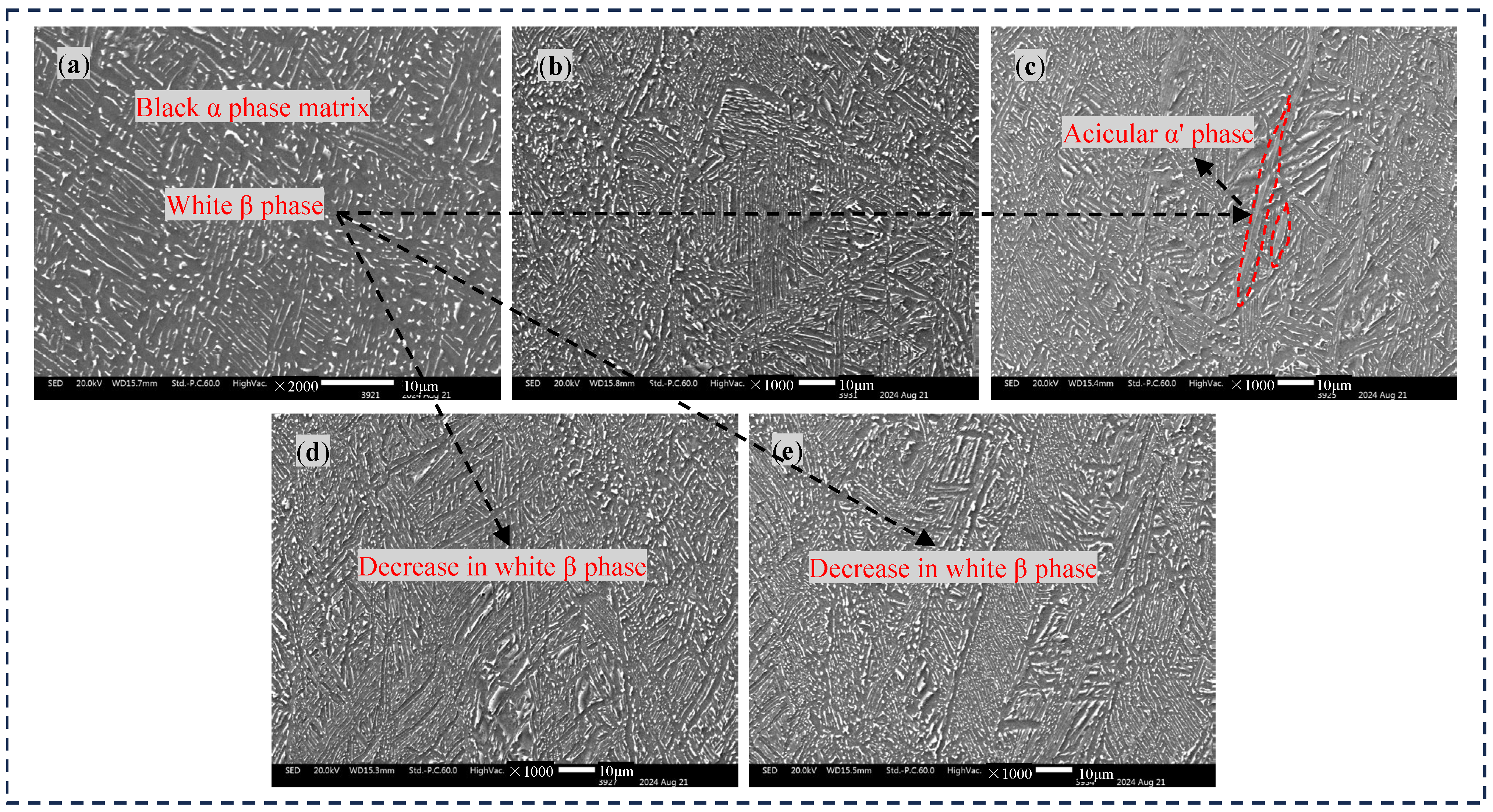
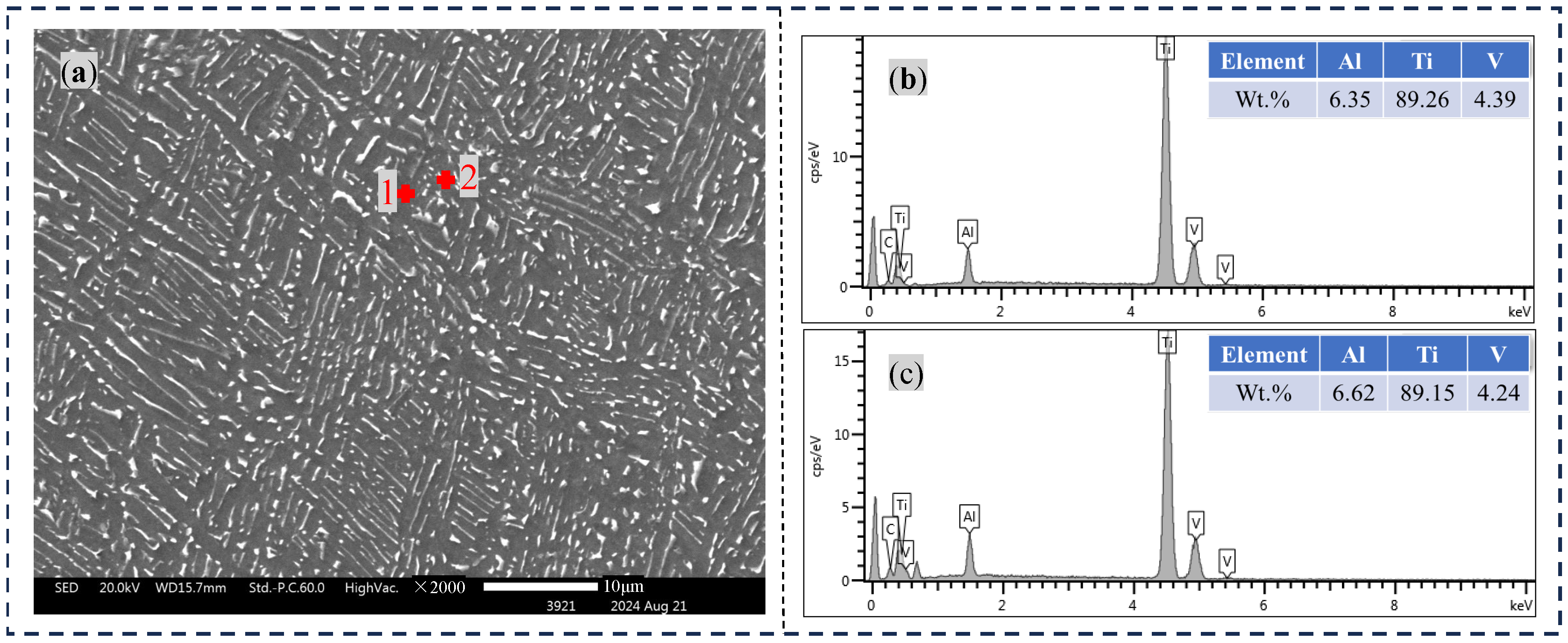





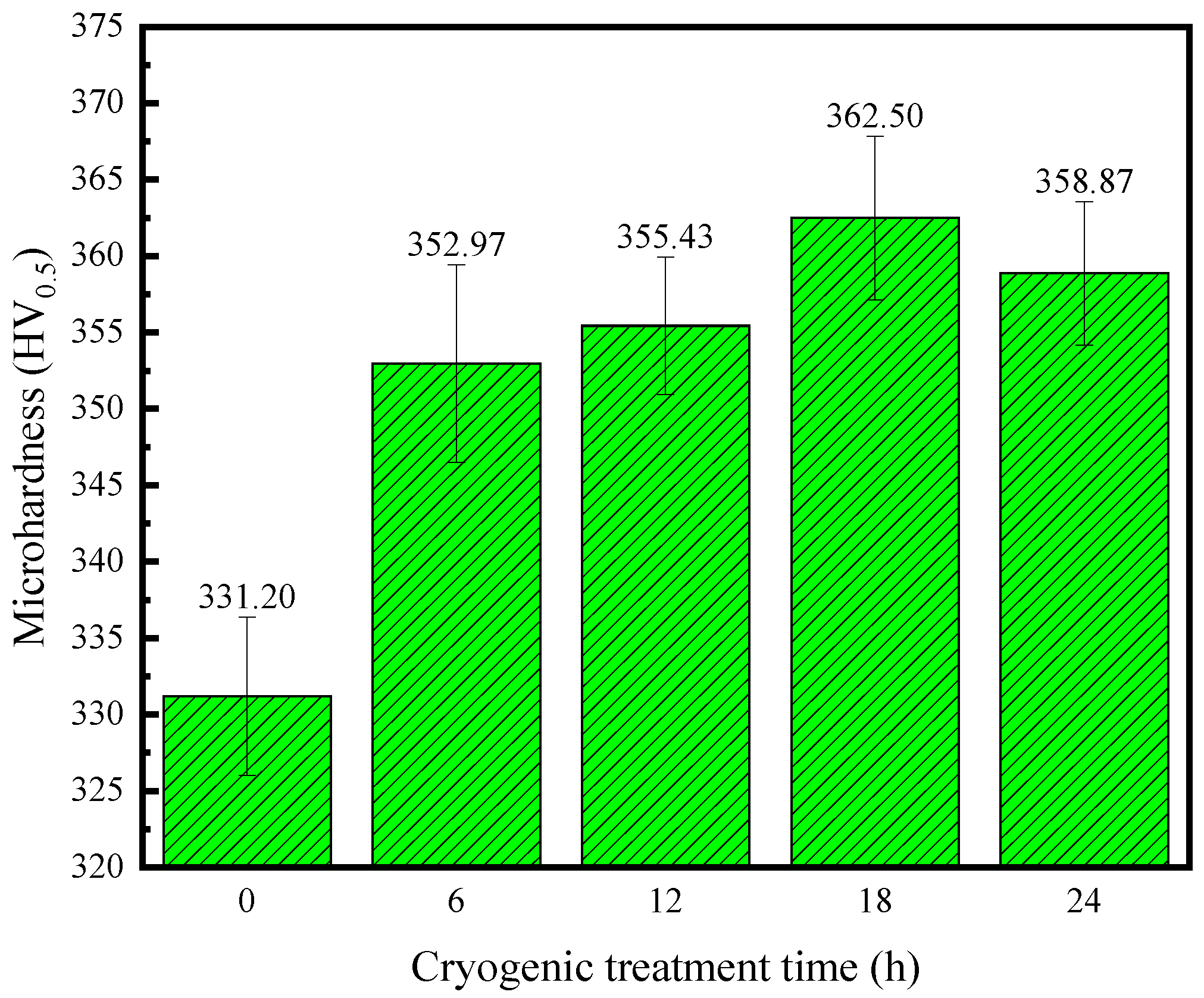
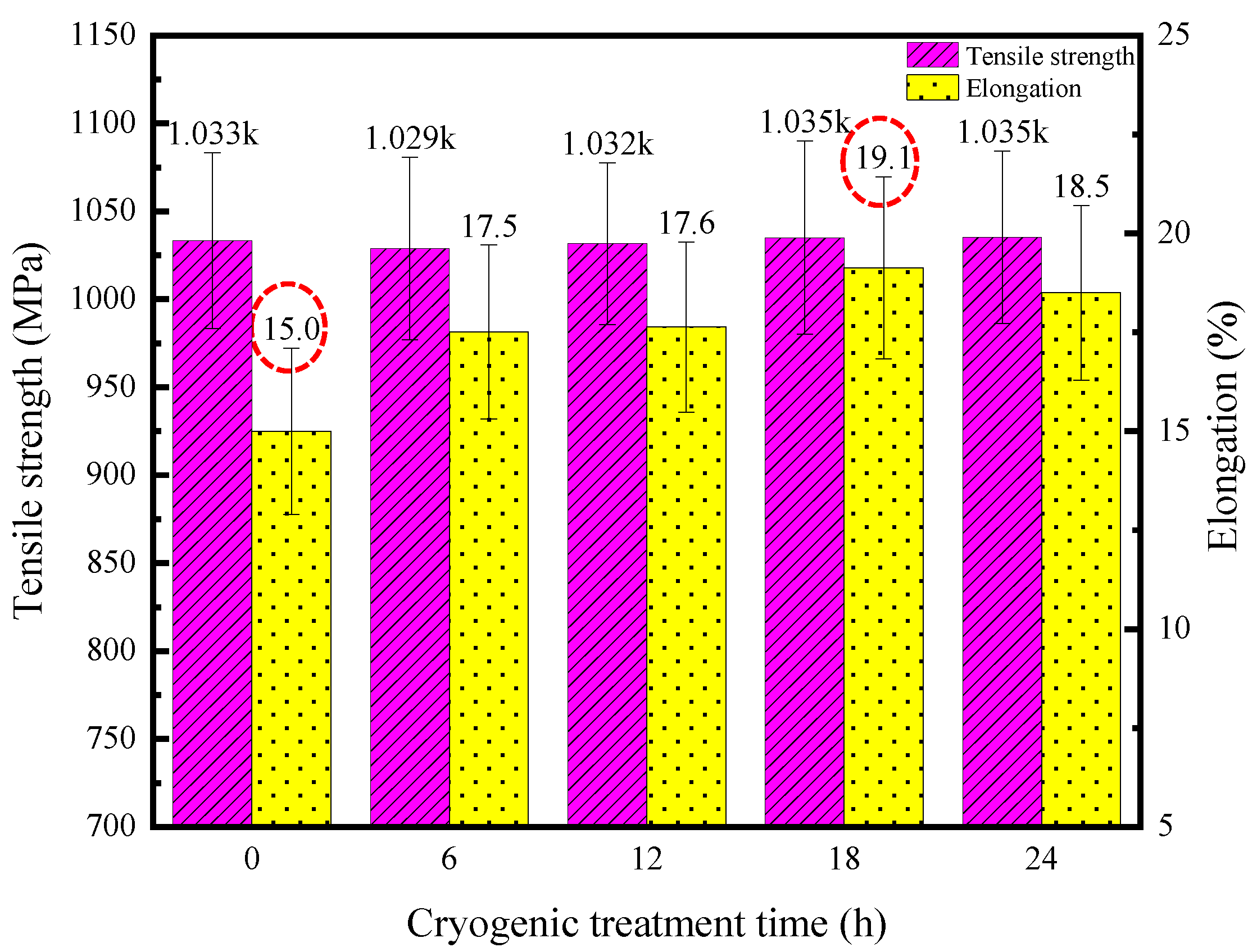
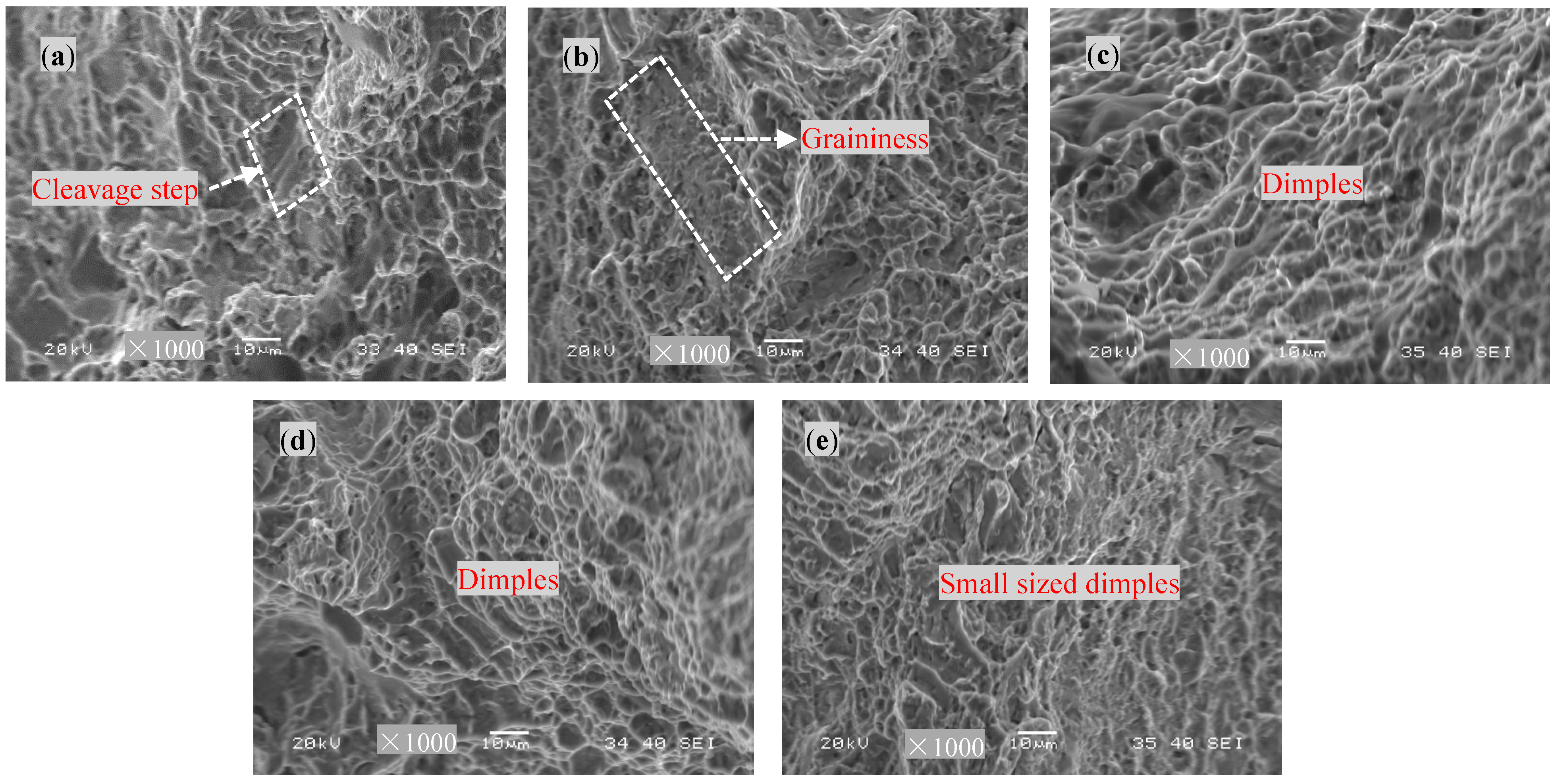
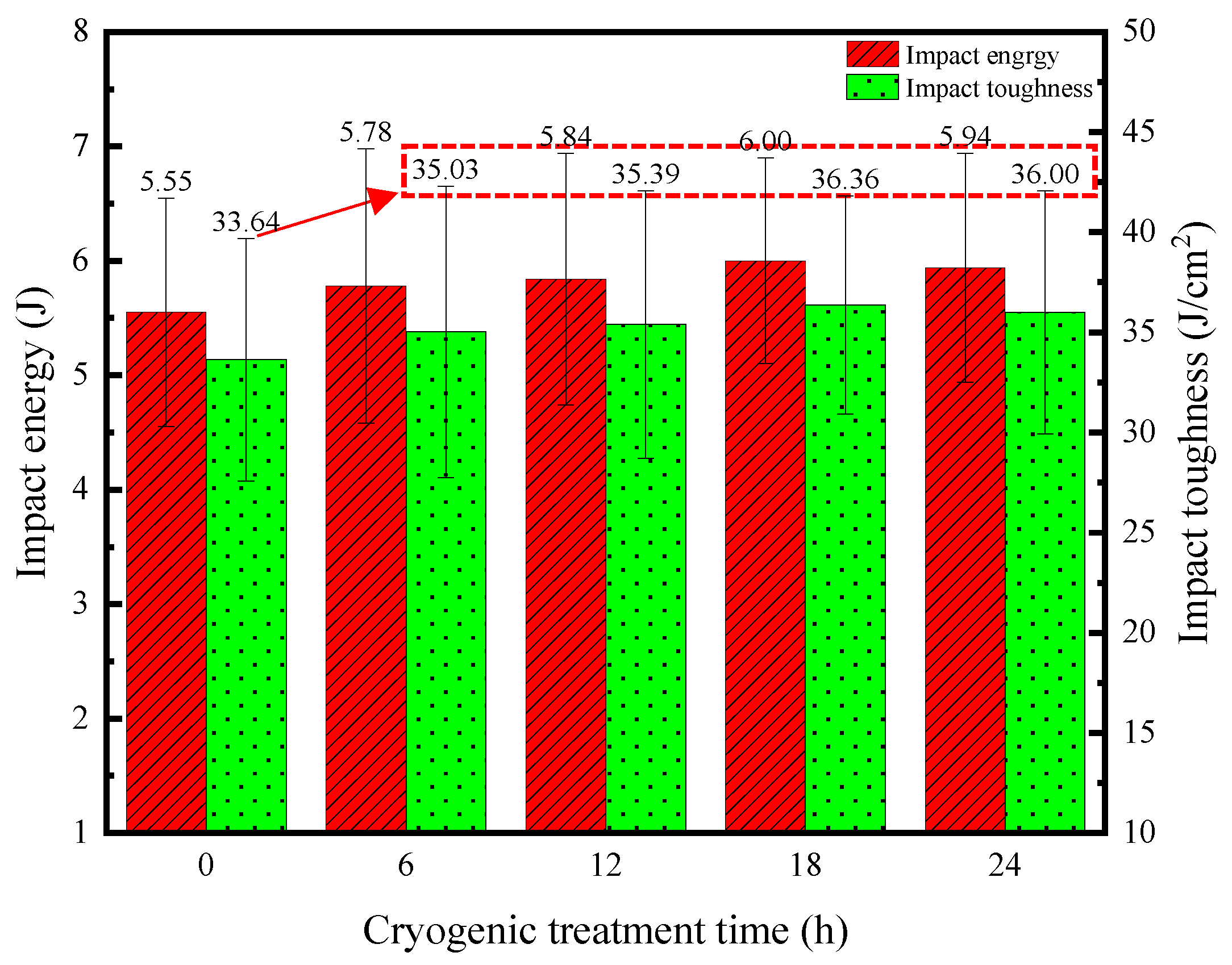
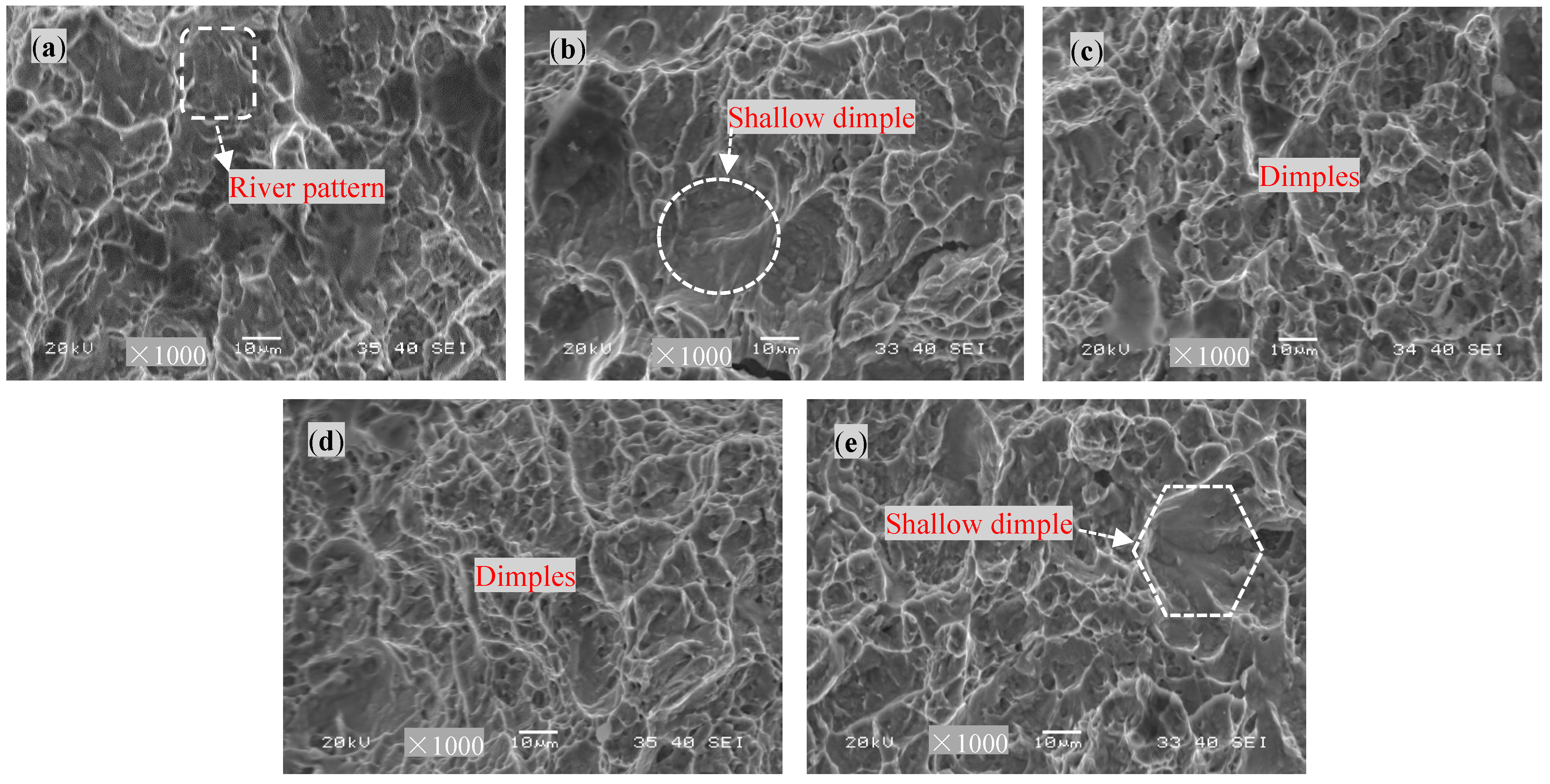
| Element | Al | V | Fe | C | N | H | O | Ti |
|---|---|---|---|---|---|---|---|---|
| Content (wt.%) | 5.970 | 3.930 | 0.086 | 0.007 | 0.006 | 0.012 | 0.150 | Balance |
| Mechanical Properties | Tensile Strength | Yield Strength | Elongation | Impact Toughness | Hardness |
|---|---|---|---|---|---|
| Value | 1033.3 MPa | 1000.0 MPa | 15.0% | 33.6 J/cm2 | 331.2 HV |
Disclaimer/Publisher’s Note: The statements, opinions and data contained in all publications are solely those of the individual author(s) and contributor(s) and not of MDPI and/or the editor(s). MDPI and/or the editor(s) disclaim responsibility for any injury to people or property resulting from any ideas, methods, instructions or products referred to in the content. |
© 2024 by the authors. Licensee MDPI, Basel, Switzerland. This article is an open access article distributed under the terms and conditions of the Creative Commons Attribution (CC BY) license (https://creativecommons.org/licenses/by/4.0/).
Share and Cite
Lan, X.; Xu, Y.; Li, J.; Gong, Y.; Shi, M. The Influence of Deep Cryogenic Treatment (DCT) on the Microstructure Evolution and Mechanical Properties of TC4 Titanium Alloy. Materials 2024, 17, 4603. https://doi.org/10.3390/ma17184603
Lan X, Xu Y, Li J, Gong Y, Shi M. The Influence of Deep Cryogenic Treatment (DCT) on the Microstructure Evolution and Mechanical Properties of TC4 Titanium Alloy. Materials. 2024; 17(18):4603. https://doi.org/10.3390/ma17184603
Chicago/Turabian StyleLan, Xuzhi, Yulang Xu, Jingyong Li, Yifeng Gong, and Mingxiao Shi. 2024. "The Influence of Deep Cryogenic Treatment (DCT) on the Microstructure Evolution and Mechanical Properties of TC4 Titanium Alloy" Materials 17, no. 18: 4603. https://doi.org/10.3390/ma17184603
APA StyleLan, X., Xu, Y., Li, J., Gong, Y., & Shi, M. (2024). The Influence of Deep Cryogenic Treatment (DCT) on the Microstructure Evolution and Mechanical Properties of TC4 Titanium Alloy. Materials, 17(18), 4603. https://doi.org/10.3390/ma17184603





